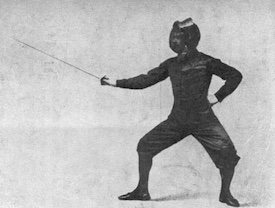Just to put something in context....
Bigshot seems determined to demonstrate, by analogy, that "10 mSec is insignificant".
If you have a home theater system, then part of your setup was to set speaker distances.
Based on the typical speed of sound in air, the compensation for one foot of distance is 1 mSec.
(If one speaker is one foot closer than the other, the system adds 1 mSec of delay to compensate the difference.)
Try changing the distance on
ONLY ONE of your front speakers by ten feet.
(By doing so you will have created a
10 mSec ERROR in the delay of that one channel.)
Now play some music and listen carefully - from your normal center listening position.
You will find that you have created an
EXTREMELY AUDIBLE AND ANNOYING shift in the sound stage.
If you don't believe that then it's easy enough to try for yourself.
I leave the conslusions to you....
I should also note that, on a typical (non-LED) camera flash...
The flash remains lit for somewhere between 1 mSec and 1/50 mSec...
(1 mSec is the longest time ever used on my most powerful Nikon flash.)
And most of us find that to be quite visible...
I also have a high-speed strobe that delivers flashes of 1.2 microseconds (just over 1/1000 mSec)....
And even they are visible to humans....
That test is measuring hearing damage due to frequency and level related to exposure times. That isn't quite the same as audibility. I think it's safe to say that if ultrasonics are inaudible at normal volumes and long periods of time, they'll be even more inaudible at 10 to 100 milliseconds. (figure corrected) And if a commercial recording has an ultrasonic spike that reaches +108dB at normal listening volumes, that particular SACD has severe engineering flaws. 108dB is extremely loud. It's about as loud as you can hear something without crossing the threshold of pain.
Just to provide context 10 milliseconds is the rotation period for a pulsar. It's less than the time of a single field in video. 50 milliseconds is the cycle time of the lowest audible tone 20Hz. Just under 100 milliseconds is the maximum desirable latency of an internet connection. (video gamers will be familiar with this!) It takes a little more than 100 milliseconds for light to travel all the way around the equator of the earth. 200 milliseconds for a person to recognize emotion in an expression. (Wikipedia is your friend!)
In any case, we're talking about a quick sliver of time in which it would be probably difficult to detect a flicker in light, much less hear an inaudible frequency.
To provide context for the volume levels we're talking about... 108dB is about the volume of a chain saw at close range. It's around the loudest industrial noise level you would ever find. It's in the range where hearing protection is not just recommended, but required.
While an exposure of 10 to 100 milliseconds likely wouldn't be long enough to incur hearing damage, it would certainly be a lot louder than you would ever find in recorded music (even assuming that the recorded music actually has ultrasonic content, which most music doesn't).
These are irrelevant, extreme situations that don't at all apply to our discussion of audibility of ultrasonics in recorded music.

























